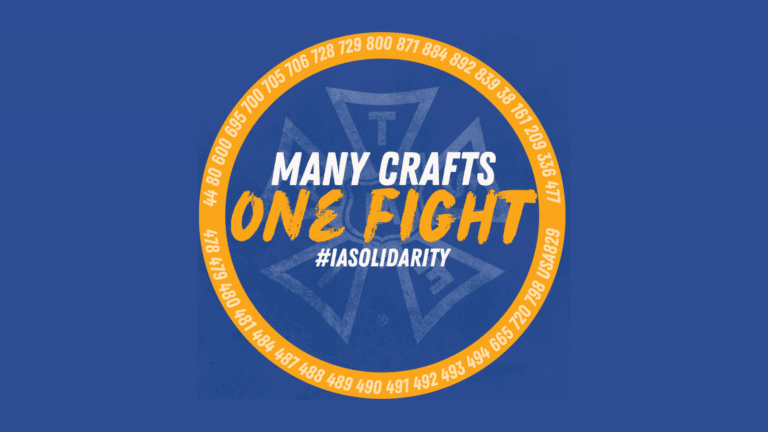The collective voice of Animation, VFX and Game workers fosters a landmark win by gaining union representation under IATSE and a further step toward improving working conditions.
Emily Gossmann worked as an animator at Titmouse Productions in Vancouver, British Columbia, for six years. Over that time, she put up with a lot—endless hours, unpaid overtime, crunchtime pressure, and the uncertainty of working from contract to contract (in her case, approximately ten contracts over those six years).
Despite all this, she loved her job. She loved the creativity and the artistry of animation. It was her passion. So she kept at it. Until the situation became intolerable.
“What started as a really great place to work slowly was turned into something we couldn’t recognize,” Gossmann said. “A series of changes in management sort of took the power out of the local workplace’s hands and put it more and more into the hands of the owners in Los Angeles. A lot of folks at Titmouse decided that we couldn’t let it continue to happen that way. And we wanted to try and do something to regain our voice in the workplace.

“We shared a great love for our work, and we wanted to be treated with dignity for doing it,” she said. “And there was a huge groundswell of people who came together after a big shakeup in our workplace and the mistreatment that came from it. So we began organizing in earnest.”
Titmouse workers in Los Angeles are represented by The Animation Guild, IATSE Local 839, but the company’s workers were not unionized in Canada. The campaign began in 2019, but then was complicated by the COVID-19 pandemic, which sent everyone to work remotely. “We had to totally shift gears and organize in ways that few people ever had to do before, going online and trying to find ways to sneak people away from work communication. Ironically, while we had the freedom of no one looking over our shoulder when we were working in person, we had all this surveillance when we were working remotely. So this became a very interesting puzzle to solve.”
But solve it they did, through social media and other forms of innovative outreach. In 2021, ninety-eight percent of the membership voted to be represented by the Canadian Animation Guild, Local 938.
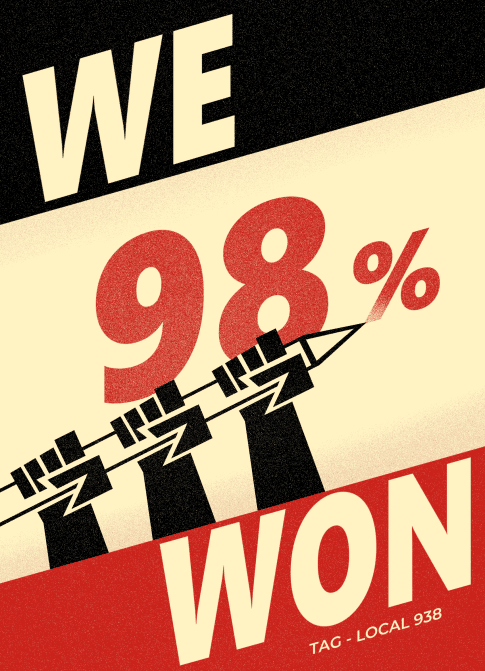
Mark Patch faced somewhat similar issues, but in a very different working environment. He is a visual effects (VFX) worker who has worked as part of the VFX production crew on a variety of feature films from the 2016 production of Ghostbusters to the 2022 production of the Jordan Peele film Nope, where he worked as associate VFX producer. Unlike all other members of production crews, VFX professionals are unorganized. Working side by side with IATSE members, the differences are obvious and stunning.
On a recent film that typifies VFX crew conditions, he shared, “From January until the movie was officially delivered three weeks later than we were told at the end of July, I didn’t have a day off. During production, we shot for four months in Agua Dulce, California, which is an hour and 15 minutes out in the desert from L.A. with no traffic (but of course, there usually there was plenty), and we’re shooting in natural light. So we would start at sunrise, but you had to be there two hours beforehand to set up and you needed time to wrap out all your equipment afterwards.
“During this time, other departments were being paid for their overtime,” he continued. “VFX workers are forced to work on flat rates which only cover 12 hours, and also have no turnaround protections for rest periods. They were getting a meal penalty when we skipped lunch, because we always skipped lunch. We weren’t.
Even in post, you work for more than those twelve hours in the office,” Patch said. “You work through lunch, and you don’t get a meal penalty for that. And then editorial has their turnaround built in and they have the ability to go home after work and say ‘I’m done, I can’t work anymore. I have four hours off out of twenty-four. This is my time.’ For VFX, that doesn’t exist. We go home, we’re emailing, we’re on our database, we’re doing reviews with India or Australia or Bangladesh or China, sometimes until one or two in the morning and then we have to consolidate all these notes because, God forbid, we get a single detail wrong. And then we go back and do it all over again, seven days a week for three or four months straight. Grueling wouldn’t even begin to describe it.”
Patch’s experience on this movie was not unique—neither to him nor to his tens of thousands of VFX colleagues.
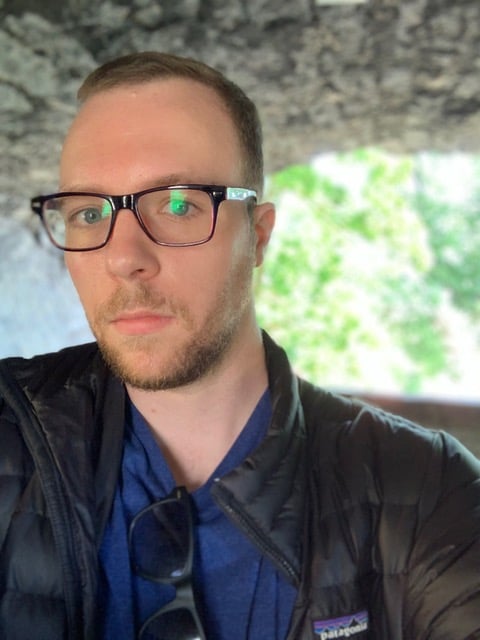
“Five or six years ago, people would talk about how you can get onto a good show, find a good producer and make it work, but now, it’s just not the case,” he said. “There’s no sustainable vision for the VFX worker. You just get thrown into the grinder and worked to the bone and then you’re thrown out.
“We’re almost second-class citizens,” he emphasized. “We’re working in the Wild West where you have to find a producer and make your own deal with no transparency, no pay scale, no pension, no portable health benefits—I’ve had seven different health plans over the past six years—no official protections, and no collective bargaining agreement that stipulates the kind of respect and working conditions that we deserve just as human beings and citizens in this country.
That’s why Patch is now organizing VFX workers and helping to spearhead a massive campaign to bring the industry under the IATSE banner. He urges other workers to reach out at VFXUnion.org and join their colleagues in demanding a more sustainable VFX industry for these critical entertainment workers.
Marissa Bernstel Coates’ experience working in the games industry has many parallels with those of Gossmann and Patch. She worked for years as a cinematic artist for several game development firms and endured similar levels of abuse when it came to endless working hours, high pressure, toxic work environments, and lack of respect.

“I personally love games, Bernstel said of her first job at Telltale Games. “I grew up with games. So it was really exciting to work at a game company, especially at a company whose games I enjoyed playing before I worked there. I thought, ‘I’m working with people my age who love games. What can get any better than that?’
“But slowly I found that I wasn’t treated like an artist who was respected,” she recalled. “It was more like I wasn’t taken seriously there. And the work culture was really toxic. We worked a ton of hours unpaid. We averaged sixty-hour work weeks, and some people would do even more, working until midnight. And if you tried to get away from that, you would be judged by your peers and you would gain a reputation that followed you around. You would just be treated badly by your friends and your supervisors.
“The people who work in games are extremely talented and passionate about what they do, but that passion is completely taken advantage of.” Bernstel said.
Eventually, Bernstel decided she’d had enough of games and transitioned to work as a storyboard artist, first for LucasFilm and then for Bento Box Entertainment—in the latter job as an IATSE member. “The biggest difference that I feel working union jobs versus working in the games industry is just that I don’t feel powerless anymore,” she said. “Having my union there to help with grievances or harassment issues is huge because, as an individual, the company would probably ignore or retaliate against you for bringing up something like that, but now I know they can’t get away with it. I don’t feel like I’m at the whim of a company anymore. I feel like I’m respected more as an artist.”
Having experienced that difference, Bernstel is working actively to motivate other game and VFX workers to organize their workplaces. “Knowing what it’s like to work at a company that works you so hard and gives nothing back and feeling like there’s no other option is a devastating place to be,” she said. “They work with the same kind of studios that we do. They do essentially the same kind of work, if not more advanced and more complex. They should absolutely be getting the same benefits that we do. It’s criminal that they’re not.”
The Front Lines
Animation, VFX and games are now on the front lines of IATSE organizing, because the industries’ working conditions are appalling, their workers are demanding improvements, and the nature of their work, artistry and skill levels dovetail perfectly with existing IA crafts.
“These workers desperately—and urgently—need union representation,” said International Vice President and Director of Canadian Affairs John Lewis. “Their working conditions couldn’t be tougher and organizing will give them the power to make things far, far better.”
“In all three fields, the long work days, brutal schedules, lack of health care and pensions, inadequate compensation and other issues come up all the time,” said International Vice President and Director of Motion Picture & Television Production Michael F. Miller, Jr. “And there’s a real opportunity for significant growth in our union, and to be able to negotiate good contracts that protect the employees and the workers in these areas.”
The Animation Guild, Local 839 has represented animators at Walt Disney, Warner Brothers and Walter Lantz Productions since it was chartered in 1952. However, the Local’s strength was eroded in the 1970s and 1980s with the subcontracting of television animation to foreign subcontractors, known as “runaway production.” Since the 1990s, Local 839 has grown again as Warner, MGM, Chuck Jones, Universal, HBO and Fox opened new animation divisions. But much animation also moved out of the studios into independent production houses that were not unionized. And much of it moved out of Los Angeles into other metropolitan areas—and even some smaller cities—across the U.S. and Canada. So there are enormous organizing opportunities in the animation industry throughout North America today.
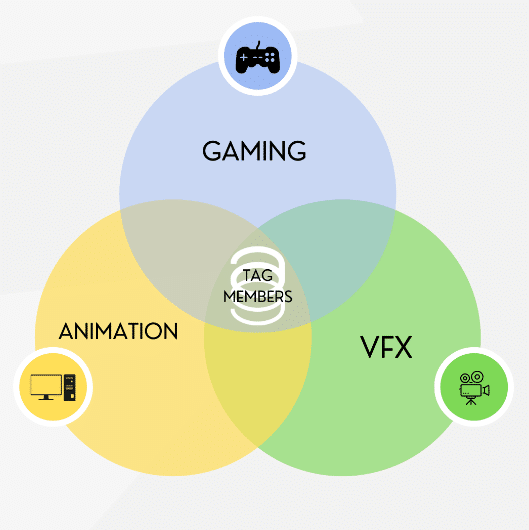
The same is true for the VFX and games industries, which don’t have the history of representation established by Local 839 in animation. There have been several breakthrough victories. More than a decade ago, Local 891 in Vancouver campaigned to organize VFX workers on Battlestar Galactica. A settlement was reached and various VFX positions are now covered by the Local. In 2019 Local 667 in Canada organized on-set VFX supervisors, coordinators and technicians into its promulgated agreement. Most recently, workers at Anemone Hug Interactive became the first full-service game development studio to form a union in Canada, organizing with The Canadian Animation Guild, Local 938. But while these wins were groundbreaking, they only represent the tip of the iceberg in these industries.
Unfortunately, many VFX workers are employed by third-party vendors and there is a well-documented “race to the bottom” among VFX vendors, competing with each other by driving down labor costs in order to acquire these contracts. A similar dynamic exists in games. But in the current environment, power balance between employers and industry workers is changing.
“There has been explosive growth in animation, VFX and games in recent years, as the demand for content skyrockets,” Miller said. “When you have high demand for these uniquely skilled craftspeople, combined with a low supply and the general economic environment right now, these workers have enormous, untapped leverage that IATSE can help maximize. It’s an optimal organizing scenario and we are seizing every opportunity to empower tens of thousands of these workers with collective bargaining and grow our union further.”
This is a great victory for animation workers at Titmouse, in Vancouver, and in the entire Canadian history. A rising tide lifts all boats!
— Canadian Animation Guild, IATSE Local 938 (@CAG938) September 23, 2021
Animated Organizing
The successful campaign in which Emily Gossmann and her co-workers organized Titmouse in Vancouver, B.C., was one of the largest and most historic victories in IATSE’s animation organizing drive. It was also the result of long, painstaking work.
“Several years ago, we made the strategic decision to partner with the Art Babbitt Appreciation Society, an informal, worker-led group advocating for the rights of animation workers named after a famed Disney animator,” Lewis said. “We reached out to them and established a formal relationship, along the lines of a mutual cooperation agreement, to help them convert their community advocacy into union organizing.”
The lead organizer, International Representative Jeremy Salter, found a more-than-receptive audience among Titmouse employees. “They’re artists, they’re producing artwork, and they’re very passionate about what they’re doing,” he said. “So because of the passion they have, they sometimes feel that it’s OK to put up with a lot.
“Across Canada, despite it not being legal, we see a lot of animation workers being asked to work unpaid overtime,” Salter said. “We see a lot of discrepancies and inequities in wages from one person to another. There’s very limited transparency within the various studios. All of these factors, plus the lack of pensions and limited health and dental benefits, lead to an industry where a lot of people burn out and leave quickly. And one of the things many workers talk about is wanting to be able to make a career in animation doing work that they love without having to sacrifice things like starting a family or buying a home or their mental and physical health. It really has been an industry that has been kind of predatory to the workers, that gets as much out of them as possible by giving them as little as possible.
“Plus, if you compare the wages and working conditions in Canada to the U.S., where The Animation Guild has been established for more than seventy years, it’s so stark,” he added.

Gossmann said, “Because the IA had the existing niche of representing entertainment workers and this long history of strong representation and union growth, and The Animation Guild in the United States, it made the most sense for us to join the IA because of their capacity to work with the clients that we work with, and the potential for collaboration with workers in the same field in the U.S. And both of those factors have definitely been proven out through the process so far.”
During the organizing drive, “Management did not put up any fight,” she said. “The only communications they sent out were entirely neutral in tone. So what we were doing on the Organizing Comtmittee was making sure that forty-five percent of the workers signed union representation cards—which at that time in B.C. was the trigger to have an election seven days later—and then making sure everyone could cast their ballot digitally.”
The result, as noted above, was ninety-eight percent support for joining Local 938.
The Titmouse workers then launched into bargaining on their first contract. “The key was establishing minimums,” Salter said. “So we took the average of all the animators or board artists and made it the new minimum. As a result, when the new contract took effect, some people saw a $400, $500 or $600 a week raise instantly because they had been getting paid so much lower than the average—and this tends to be the younger workers who are coming fresh out of school. That was a big thing.
“Another improvement was guaranteed wage increases on a regular basis,” he continued, “which means that the floor is continuing to rise. That’s an important piece in an industry where workers are forced to negotiate their conditions on every contract and a lot of these workers are doing six-, seven- or eight-month contracts. They had been constantly renegotiating, which was often stressful.
“Another important piece involved clarification around overtime,” Salter said. “We needed to ensure that workers know they are entitled to receive overtime for additional hours worked. We put in clear rules for how to get overtime—and equally important, ensuring all workers have the ability to say no to overtime. We also increased sick days, personal days, and bereavement leave.”
“We included this really strong workplace anti-bullying, anti-harassment and anti-discrimination policy,” Gossmann added. “It was written by our members and brought into the agreement with, I believe, no edits from management. It’s something we’re quite proud of.”
The contract also included the creation of a joint labor-management committee, limitations on subcontracting bargaining unit work, the ability of employees to refuse any work shifted from Local 839 in Los Angeles as a result of a labor dispute, improvements to retirement plan contributions, a transfer of the existing employer retirement plan to the IATSE national retirement plan and Canadian Entertainment Industry Retirement Plan, and remuneration for employees when they use their own equipment, whether working in the studio or from home.
With all of these landmark improvements, the collective bargaining agreement passed with ninety-seven percent of the members voting in favor in September 2021. This represents the first IATSE animation agreement in Canada.
And it won’t be the last. “Animation companies are scattered through Canada,” Salter said. “For example, Ubisoft is in Winnipeg and there are small animation studios in northern Ontario. It’s not just in the major metropolitan areas. That’s why local unions in these areas should do some research on studios in their jurisdiction, and we [The Canadian Animation Guild] would be happy to discuss how we can put them onto our organizing target list.”
Organizing efforts are also focused on aspiring animators about to enter the workforce. “We’re doing outreach to our community and to students entering our industry,” Gossmann said, “with school presentations and town halls.”
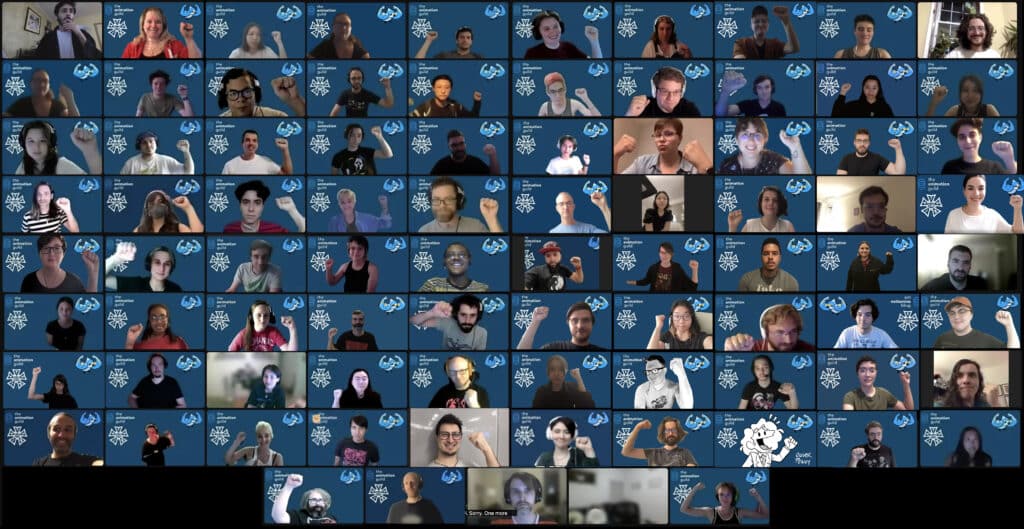
The Canadian Affairs Department is helping animation workers in other ways, too. For example, last year, a group of non-union employees of Tangent Animation Studios in Winnipeg and Toronto approached IATSE for help in securing termination pay following an abrupt closure of the company’s operations without notice. The IA sprang into action, providing free legal advice and initiating a letter-writing campaign demanding the immediate payment of termination pay to all affected employees, as well as letters to the Manitoba and Ontario employment standards branches urging them to investigate the matter. As a result, the Manitoba and Ontario employment standards branches ordered Tangent to pay the affected employees their employment standards termination pay entitlements. The total payout was estimated to be over $4.5 million, with many workers receiving $15,000 to $20,000.
The Vancouver Titmouse victory had big reverberations in the U.S., as well. In January, Animation workers at Titmouse’s New York studios overwhelmingly voted to join The Animation Guild after more than a year of tireless preparation and hard work—the first time Local 839 organized a studio outside of Los Angeles County. After ninety percent of the workers signed representation cards, Titmouse voluntarily recognized the unit.
“This historic moment has given me a sense of agency I never thought I could be afforded in the workplace—especially as a production worker, unionization felt unattainable until I saw the unstoppable force that is this organizing effort,” said Gray Rothey, a member of the Titmouse N.Y. Organizing Committee. “I feel a deep sense of gratitude and relief knowing that this means current and future generations of New York artists and production staff will have their voices heard.”
“The organizing work of the Local has increased exponentially over the last three or four years,” said Local 839 Business Representative Steve Kaplan. “We are undertaking a massive nationwide effort to ensure all animation workers are treated with respect and are afforded the same benefits and protections as those who are working in Southern California. The organizing we’re doing now takes an incredible amount of work, but the fact is, if we want to make substantive change in the industry, we can’t just represent a corner of it in Los Angeles and we can’t represent less than half of the building.”
In fact, Local 839 has made significant organizing gains this year alone. In addition to Titmouse, animation workers have won representation at ShadowMachine and the shows The Simpsons, Rick and Morty, Solar Opposites, Family Guy and American Dad. Most recently, animation workers at Stephen Colbert Presents Tooning Out the News overwhelmingly voted to join Local 839, as did their sisters and brothers at Bento Box Entertainment, which produces shows such as Bob’s Burgers and Central Park.
“As animation continues to expand and grow with the increased amount of content, there’s more animation in all genres being done, and more animation being created across our countries,” Miller said. “A lot of the opportunities to organize in this area are coming from that growth in content creation, as well as recognition for the value of animated content and the work that our members do. And with Local 839 and Local 938 leading the way, we are seizing each and every opportunity before us.”
Effecting Change in VFX
Organizing VFX professionals is taking a somewhat similar track to animation.
“There are numerous parallels between the beginnings of The Animation Guild and workers who were doing things that at the time may have been viewed as a novelty or as marginal to the overall movie-making business,” said Local 839 organizer Ben Speight. “Visual effects had that same trajectory, going from the novelty of Star Wars to the point where it’s now so ubiquitous that you don’t even know you’re watching something that was shot with VFX.
“The interesting thing about The Animation Guild’s position right now in support of VFX organizing is that in many instances, these are the same companies that employ members of The Animation Guild, whether it’s Marvel, Sony, Disney, Netflix and Scanline, for example,” he said. “There are so many connections between subsidiaries of signatory studios to TAG’s agreement in Los Angeles and VFX workers. There’s a lot of overlap.
“Many of these workers are seasoned veterans in VFX,” Speight explained. “And they’re looking back at their careers and asking, ‘What do I have to show for it? Well, I can demand hourly pay for the first time because my skills are in the highest demand they’ve ever been. And I’m having to train people who are brand new to VFX that never worked in these roles. But where are the rights and the benefits and the standards that everybody else in entertainment receives?’ That’s why we have a greater interest in organizing from VFX workers than has existed in the recent past.”
Mark Patch, the VFX veteran and organizer, added, “We are now focusing on production side workers who are already working in one-hundred percent union environments and have every sort of opportunity to see the differences between the way that their department is treated and the way that other departments are treated.
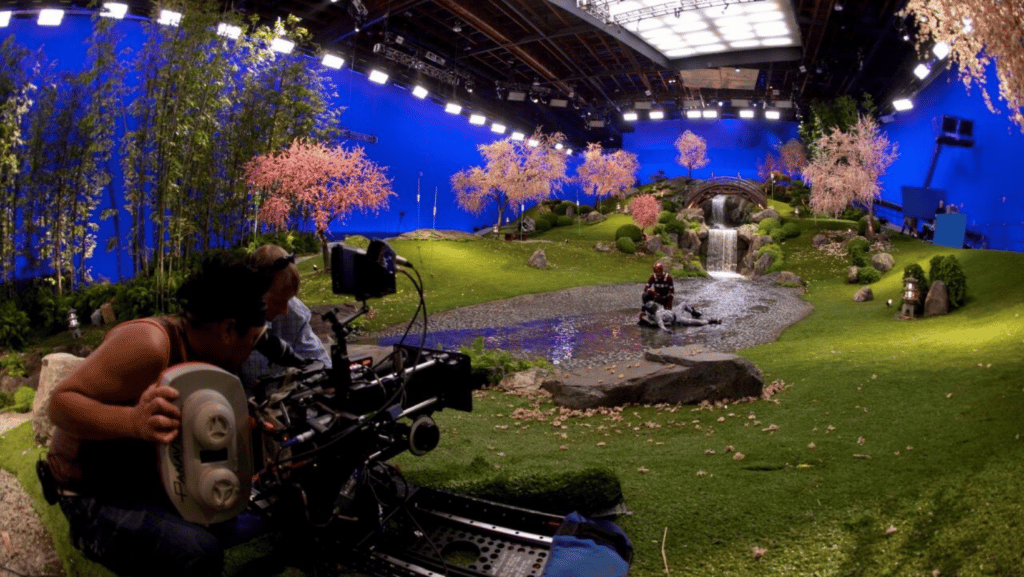
“We know how critical we are to the filmmaking process,” he said. “Basically, there’s no film or television show that’s released today without some sort of visual effects—even historical or romance or whatever, it doesn’t matter. And there’s a critical mass of workers right now who are experiencing these conditions and also know that it can be different because they’re not working in isolation.
“We have a strategy, and we have the willingness, the passion and the commitment from the people we’re talking to, even these people who have been forced to leave visual effects to go work for editorial or ad agencies,” Patch noted. “People who have felt forced to leave the field tell us, ‘We love VFX. Let me know if there’s anything we can do.’
“We have a unique opportunity, in terms of the mood of the country, the state of the economy and the state of Hollywood, where never has visual effects been more important and yet never has the outlook for the workers been more grim,” he said. “So I think we have a real opportunity here to make our collective voice known and garner the respect we’re owed, because they can’t make Iron Man fly or light sabers do anything without a visual effects worker.”
In support of its organizing efforts, The IA has launched the vfxunion.org website and is encouraging IA members, as well as unrepresented VFX artists, to visit it. And they are putting out a call for IATSE members working on motion picture and television production crews to talk with the VFX artists on their shows about how union representation empowers entertainment professionals to improve their lives.
“Visual effects has historically been non-union and it’s probably the largest area of motion picture television production that remains unrepresented,” Miller said. “The employers and the production companies have a very vested interest in keeping it that way. But as content continues to grow, the value that visual effects workers bring to the content that we all enjoy grows as well. We have both more opportunities for organizing and more opportunities for workers to be treated unfairly.
“You have a successful industry that’s growing fast and that pressure lands on the workers,” he said. “The workers realize they’re better off coming together, to be represented, where they can stand up and have a voice and be heard at work around issues such as excessive overtime, no days off, and crazy crunch periods. This organizing is long overdue. And we’re looking forward to getting to the point where we’ll be able to represent the majority workers in visual effects. That day is coming.”

An Organizing Game-Changer
The games industry is becoming more like VFX and animation with each passing day, with games studios now producing animated content for television shows and films. Games workers share backgrounds, skill sets, and often employers with VFX artists.
“In games, animation and VFX, we do very similar work,” Speight said. “And in many cases, there is also a common social connection and a common community of people that came out of similar art schools and educational backgrounds, who generally share many of the same interests. And we’re finding that TAG members, in some cases, share the same household or happen to be close friends with games and VFX workers. And so it’s a unique opportunity to map out what in a very literal sense is a massive Venn Diagram of overlapping community and workplace interests, where you have the IA very much at the center of these non-union spaces.
“So if there’s any union that can scale out this organizing beyond individual small, independent studios into something that will include some of the major players in games, it’s us,” he said. “Ultimately, it’s going to be just a matter of time before games workers say, ‘You know, I can’t eat prestige. It’s great that I’m working at the studio. I love pursuing my passion. But I want to do crazy, radical things like have a family, build up some savings, take time off, and have a work-life balance.
“The general zeitgeist of our times is that people want to have collective consent over the lives, including work,” Speight explained. “And so even in places that like games that once seemed impenetrable to organizing efforts, people now are saying, ‘Nope, I’m going to have boundaries so I can continue to work in games. I’m not going to abandoned games simply because of the toxic work environment. I will seek to make it better.’”

This phenomenon was proven out in September, when workers at Anemone Hug Interactive in Vancouver, B.C. made history by becoming the first full-service game development studio to form a union in Canada. Utilizing the Labour Relations Board of British Columbia’s new single-step certification process requiring instant recognition when fifty-five percent of the employees at a workplace sign union representation cards, Anemone Hug workers became the newest members of the Canadian Animation Guild, Local 938.
“For years, game workers in Canada have been working without the benefits and protections of a union collective agreement and without the strength of union representation,” Lewis said. “Our members at Anemone Hug sent a clear message to game workers in every province—forming a union is not only possible; it has been done.
“We have many other opportunities in Canada, too,” Lewis added. “Here in Toronto, they’re building a massive new arena for Esports with 8,000 seats and 200 events a year. We aim to represent everyone, from the game developers to the technicians, from the lighting crew to the A-V operators.”
Miller noted that “The explosive growth and content in games has led to a massive increase in the number of workers in this area. And similar to visual effects and other issues we’ve heard at tech companies, the working conditions around crunch time, long work days, brutal schedules all come up when we’re talking with workers in the games industry who are interested in becoming more organized. And there’s a real opportunity here for significant growth in the union, as well as being able to negotiate good contracts that protect the workers in these areas.”

Future Growth
The IA’s victories in winning representation at Titmouse Animation, Shadow Machine, Bento Box Entertainment and Anemone Hug Interactive offer just a glimpse of what lies ahead in animation, VFX and games given the union’s dedication to organizing in these areas.
“This is a time when it is, dare I say it, fashionable to be pro-union,” Kaplan said. “We’re certainly taking advantage of these times. We look forward to bringing all this work under agreement so that we can continue to make lasting change in the industry, and support President Loeb’s goals of growing the IA in order to make it stronger. I think that we’ve hit this kind of sweet spot where we have both the leadership vision and the rank-and-file desire to make sure employers know if you want to use our trade, you’re not going to hide under animation or VFX—you need every aspect of production done union.”
“It’s been really inspiring what we’ve been able to do just in a couple of months, so I’m feeling really good about where this is going to go,” Marissa Bernstel Coates said.
Emily Gossmann said, “I think people sometimes doubt their own ability to make change a little bit and animation, VFX and games workers should know this: If every single one of you contributes to organizing and trying to make your workplace better, you actually have a ton of ability to improve your industry—not only for yourselves, but for a lot of other people. You should never doubt that capacity, and that’s power.”
International President Matthew D. Loeb has set the direction of IATSE, made the commitment to full-scale organizing in animation, VFX and games, and intends to see it through.
“The IATSE is the largest entertainment union and our expertise in this sector will ensure that the workers in these industries get the representation they need and deserve,” he said. “These workers have a home in the IA and our success at studios such as Titmouse and Anemone Hug will inspire others to form unions at their own workplaces. By working together, they can have more control of their working conditions and can address the issues that have been plaguing these industries for years.
“Every single animator, VFX artist and game developer is a highly-skilled, creative craftsperson who has the right to be treated with respect and dignity, to work in a non-toxic environment, to have work-life balance, to earn wages and benefits commensurate with their prodigious talents, and to have humane, supportive working conditions,” Loeb said. “The only way to achieve this is through the power of collective bargaining. Just as we have done in the other entertainment industry crafts, we intend to unite and own the work. If studios, producers and other employers want world class motion pictures, television shows and games, they need to stop trying to divide and conquer and instead hire from our members and adhere to our collective bargaining agreements.
“The need to keep growing our great Alliance and represent all the work in our industry, especially as it rapidly evolves, has never been greater,” Loeb said. “We will stay ahead of the pace of change. We will meet the challenge and we will prevail, for the sake of every worker in our industry.”
Take Our Survey & Help Support Organizing
Many of our colleagues working in VFX and games do not enjoy basic protections offered in our Collective Bargaining Agreement, such as paid overtime, wage minimums, high quality healthcare, and much more. Whether you have worked in the VFX and games industries or whether you have friends who have, we need your help to support organizing efforts in the industry.
Members of The Animation Guild, Local 839 are actively working to build the TAG VFX/Games solidarity campaign. They are using TAG’s own momentum-spreading movement to inspire those in VFX and Games.
Please help us build a network of support for VFX and Games workers by filling out our Solidarity survey. Please go to https://animationguild.org/tag-supports-vfx-and-games/ and click the SOLIDARITY SURVEY link in the blue box at the right.
In addition, you can contact the campaign directly at vfx@iatse.net.
